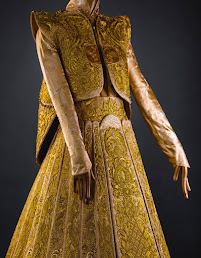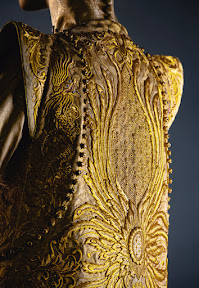In this blog post i will create four sketches of patterns, that can be useful in the development of my main project creation. I will also talk about the Chinese patterns connecting with their origin and history.
The Chinese patterns had been representing loads of symbolic meanings during the history, being important for the people's lives since from the neolithic tribes to the modern society. The utilization of patterns and colours during the history was quite rigid being some of them exclusively used by some groups of people dividing them in social status, gender, age and occupation. The patterns were used also in daily utensils and ritual wares, clothes and jewelry, they are embodiments of traditional culture and aesthetics
Hongzhi Emperor in Imperial Robe with the 12 Patterns, Painted By Court Artist of the Ming Dynasty — Taipei Palace Museum
Patterns from nature were use since the Neolithic era, because painting patterns of natural elements represented respect and worship to the nature, pray for blessing or as decorations. Those patterns are still frequently used today to represent auspiciousness, promotion, happiness and wealth, etc. (For example clouds, thunders, mountains, water waves and vortex)
Thunder pattern Jade article of the Warring States period (403 BC - 221 BC Shanghai Museum)
Adding to the nature patterns, there were three animal patterns that were used more often from the ancient times until today, the Fish, the Dragon and the Bird.
the astrological animals and the mythical creatures were present in the patterns, because they believe that every person has a zodiac animal and combined with the yin-yang and five elements theory, all the symbols and their mansion can assign a auspicious animal do guard.
Eaves tiles of the Han Dynasty (202 BC - 220 AD) Shanghai Museum
The civilians used to use more animals as traditional Chinese patterns, there were used to represent a range of meanings like as example, longevity and high-ranking officials.
Last but not least, the Flora an important section in traditional Chinese patterns, including beautiful flowers that are used to represent 12 months in the Chinese Calendar, plants with auspicious pronunciations or meanings, and continuously twined branches and flowers that symbolize endless happiness and prosperity.
Reference
Chinese F 2021. [online] Available at: <https://www.chinafetching.com/chinese-pattern> [Accessed 10 August 2021].
Sketch 1 -
Sketch 2 -
Sketch 3 -
Sketch 4 -































